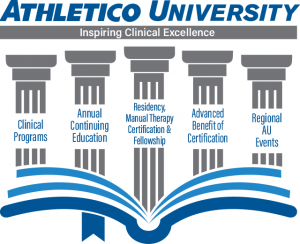Athletico is a place to learn, grow and develop, and we do this through Athletico University and a culture of Clinical Excellence. We have created a culture that integrates quality outcomes, and patient experience, including effectiveness, net promoter score, and patient satisfaction, with well-established best practices that are supported by clinical and operational excellence. At Athletico, we focus on our clinicians and are guided by our purpose and core values. “We empower people, inspire hope, and transform lives.” This applies to not only the patients’ lives we touch but also the lives of our employees and the greater purpose we create for them to make a difference in their communities.
- Athletico provides continuing education benefits to equip employees with the knowledge needed to excel in their careers and give every patient superior care. We encourage all employees to develop new skills and competencies through clinical excellence including classes, seminars and certifications.
- Athletico physical therapists can apply for the Orthopaedic and Sports Residencies, Manual Therapy Certification or Fellowship training programs. Specialization in hand therapy is also important which is why we support pathways to becoming a Certified Hand Therapist.
- To continue to provide our patients with superior care, we offer generous continuing education benefits to our staff.
- At Athletico, we are committed to our employees’ development and continuous improvement. We’ve developed an extensive mentoring program for all employees as they begin their careers at Athletico. The Clinician Mentoring Program consists of two components: Operations and Skill Development.
- Athletico’s Student Clinical Education Department is designed to enhance the learning of PT, OT and PTA students in the clinical setting.

